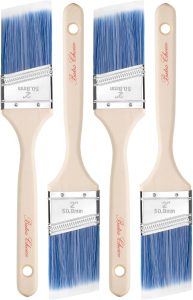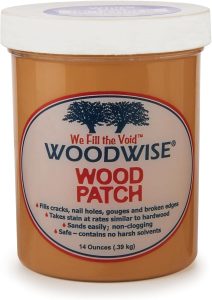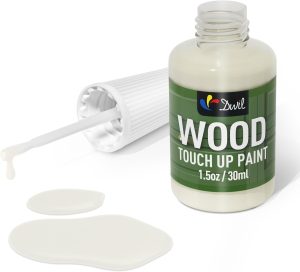The Best Wood for Painted Trim – Choosing the Right Wood for a Lasting Finish
When it comes to interior or exterior trim work, one of the most important decisions you’ll make is choosing the right type of wood. While functionality is essential, aesthetics also play a crucial role in creating a polished, finished look. Whether you’re renovating your home, building a new one, or simply updating the trim, selecting the best wood for painted trim ensures you get both a beautiful and durable finish.
We’ll explore the top wood choices for painted trim, why certain types of wood are more suitable than others, and provide tips on how to paint trim properly for a smooth, professional finish.
Why Choose Painted Trim?
Trim, whether it’s baseboards, crown molding, door frames, or window casings, is often one of the finishing touches in home design. It adds character, defines spaces, and highlights architectural features. While stained wood trim is classic and beautiful, painted trim is a popular choice due to its versatility, modern appeal, and ease of maintenance. Painted trim can easily be updated to match different color schemes and provides a fresh, clean appearance.
Some benefits of painted trim include:
- Modern and sleek appearance: White and neutral-colored painted trim adds an elegant, clean look to any room.
- Easier maintenance: Painted trim is easier to touch up compared to stained wood.
- Enhanced contrast: Painted trim can create a striking contrast with wall colors, especially in spaces with dark walls or lighter trim.
- Versatility: Painted trim can easily be matched with any design aesthetic, from traditional to contemporary, farmhouse to industrial.
But for the best finish, the wood you use for trim must be chosen with care. The right wood will take paint well, provide durability, and give you the polished look you want.
Key Factors to Consider When Choosing Wood for Trim
1. Paint Adhesion
Not all types of wood accept paint equally well. Wood with a smooth, closed grain is ideal for painted trim because it helps achieve a smooth, even finish. Wood types with open grains may absorb paint unevenly, leading to a blotchy or rough finish.
2. Durability and Strength
Trim needs to be durable, especially in high-traffic areas. For example, baseboards and door casings can endure heavy wear, so the wood should be strong enough to resist dents and scratches.
3. Cost and Availability
The cost of wood can vary greatly depending on the species and availability. Some woods, like pine, are more affordable, while others, like oak or maple, can be more expensive. You’ll want to balance your budget with your design and durability needs.
4. Workability
Certain types of wood are easier to work with than others. Woods that are easy to cut and shape are ideal for trim work. Softwoods, for example, tend to be easier to cut than hardwoods. However, hardwoods tend to be more durable and may be worth the extra effort if the trim is meant to last longer.
Best Wood Types for Painted Trim
Here are some of the best wood options for painted trim:
1. MDF (Medium-Density Fiberboard)

Best for: Affordable, smooth finish, easy to work with
Why it’s great: MDF is a popular choice for painted trim due to its smooth, even surface, which takes paint extremely well. Unlike natural wood, MDF doesn’t have knots or grain patterns, which means it creates a flawless, consistent finish. This makes it ideal for painted trim, as you can get a uniform color and sheen across the entire surface.
MDF is also very affordable, which makes it a budget-friendly option for homeowners who want the look of custom trim without breaking the bank. Additionally, MDF is easy to cut, shape, and install, making it a favorite among DIYers and contractors alike.
Pros:
- Very smooth surface for easy painting.
- Budget-friendly.
- Doesn’t have knots or open grains that require extra preparation.
- Easy to work with and shape.
Cons:
- Susceptible to moisture damage, so it’s not ideal for areas with high humidity, like bathrooms or kitchens.
- Can be more difficult to repair if damaged compared to solid wood.
2. Pine

Best for: Softwood option with a natural finish and ease of use
Why it’s great: Pine is one of the most commonly used woods for trim, and it works well for painted finishes. This softwood is affordable and readily available, making it a popular choice for homeowners on a budget. While pine does have a visible grain, it takes paint quite well when properly primed, and the grain can even add subtle texture to the trim.
Pine is relatively easy to cut and shape, and it’s strong enough for trim work in most areas of the home. However, you may need to use a primer to seal the wood and prevent resin bleed, which can create imperfections in the painted finish.
Pros:
- Affordable and easy to find.
- Takes paint well with proper preparation.
- Easy to cut, shape, and install.
- Lightweight and strong.
Cons:
- Prone to dents and scratches due to its softness.
- Resin pockets can cause staining, requiring a primer for best results.
3. Poplar

Best for: Mid-range wood with good paint adhesion and strength
Why it’s great: Poplar is another affordable hardwood that’s an excellent choice for painted trim. While it has a slightly more noticeable grain pattern than MDF or pine, it still takes paint well and creates a smooth, attractive finish. Poplar has a moderate density, making it easy to work with but also sturdy enough to resist damage over time.
Poplar is often used for painted cabinetry and trim because it’s relatively inexpensive, compared to other hardwoods, and provides a clean, durable finish. It’s a great choice for areas that require more durability than pine but where cost is still a factor.
Pros:
- Takes paint well and creates a smooth finish.
- More durable than pine.
- Strong and resists wear over time.
- Relatively affordable compared to other hardwoods.
Cons:
- The grain can be more visible, requiring more prep work for a flawless paint job.
- Not as readily available in all regions as pine.
4. Oak

Best for: Durable and high-quality finish for long-term use
Why it’s great: Oak is one of the most durable hardwoods, and while it’s often used for furniture, it also makes a great option for trim. Although oak has a more pronounced grain pattern, it can still be painted successfully with the right prep work. Oak offers strength and resilience, making it ideal for high-traffic areas where trim needs to withstand some wear.
It is important to note that oak’s grain may require more sanding and a higher-quality primer to achieve a smooth, even finish, but once painted, it provides a sophisticated and long-lasting result.
Pros:
- Highly durable and long-lasting.
- Resists dents and scratches.
- Ideal for high-traffic areas.
- Suitable for creating a more high-end look.
Cons:
- The grain can be challenging to work with when painting.
- More expensive than softer woods like pine.
5. Maple

Best for: High-end, durable wood for intricate trim details
Why it’s great: Maple is another high-quality hardwood that works well for painted trim. It is more dense and durable than many other woods, making it a good option for areas with heavy use. Maple’s fine grain can make it a little harder to paint smoothly compared to pine or poplar, but with the right preparation, it will create a beautiful, durable finish.
Maple trim is often used in luxury or custom-designed homes because of its strength and visual appeal. It’s more difficult to work with than softer woods, but it’s worth the effort if you’re looking for an upscale look.
Pros:
- Strong, dense, and durable.
- Excellent for creating detailed, high-end trim designs.
- Resists dents and wear well over time.
Cons:
- Difficult to work with due to the fine, tight grain.
- More expensive than many other types of wood.
Tips for Painting Trim
Regardless of which wood you choose, it’s important to follow the proper steps to ensure your painted trim looks great and lasts for years.
1. Prep the Surface
Proper preparation is crucial for a smooth, even finish. Sand the trim to remove any imperfections, and use a good primer to seal the wood and improve paint adhesion.
2. Use High-Quality Paint
Use a high-quality latex or oil-based paint for trim, depending on your preference. Oil-based paints are more durable but require more time to dry, while latex paints dry faster and are easier to clean up.
3. Apply Multiple Coats
To achieve a smooth, professional finish, apply at least two coats of paint. Be sure to let each coat dry fully before applying the next.
4. Finish with a Glossy or Satin Topcoat
Consider using a satin or semi-gloss finish for trim, as these finishes provide a nice sheen and are easier to clean.
Conclusion
Choosing the best wood for painted trim depends on your needs, budget, and the overall aesthetic you’re aiming for. MDF, pine, poplar, oak, and maple all make excellent choices, depending on the type of look and durability you want. For a smooth, even paint finish, MDF and poplar are excellent options, while oak and maple are ideal for those looking for a high-end, durable look.
With the right wood and preparation, your painted trim can provide a sleek, polished finish that enhances the beauty of any room in your home.


Leave a Reply